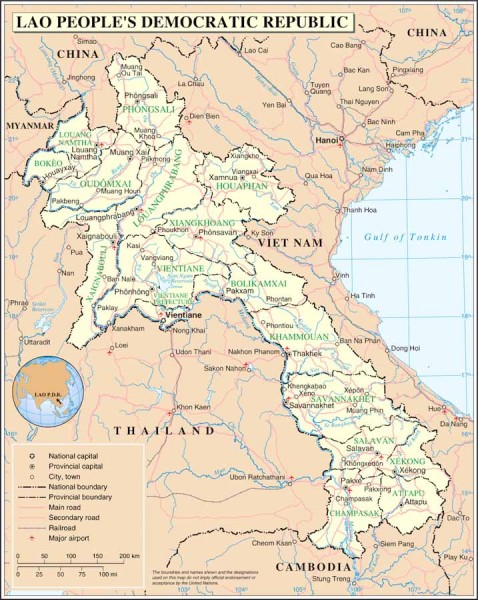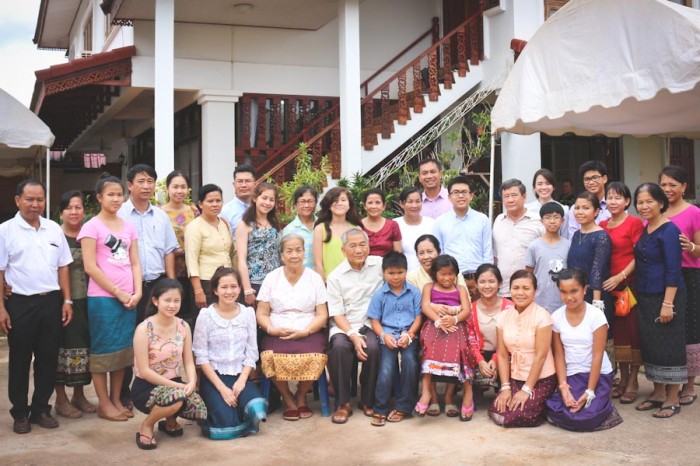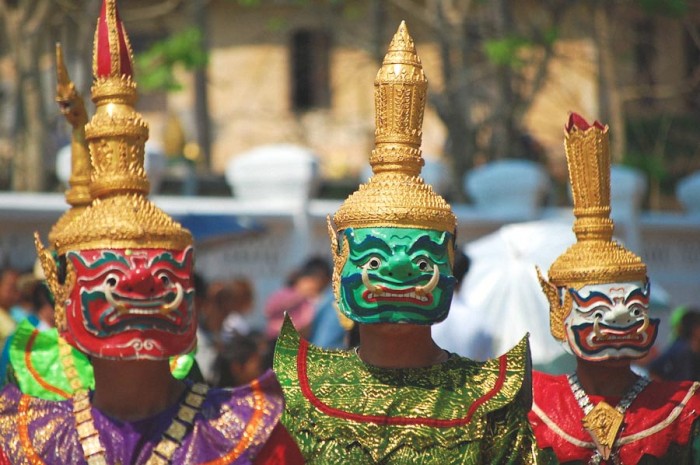Most Americans born after the Vietnam War know little about the country of Laos, much less about the U.S.’s contentious role in its history.
But in Seattle, host to one of the largest Lao communities in the United States, Laotian culture and history are a vital part of our city.
Pom Khampradith, Director of the Pacific Northwest chapter of the Lao Heritage Foundation, is dedicated to sharing this culture and history with the greater Seattle community.
“It’s what made me who I am today,” Khampradith said, “being able to be rooted in my culture. That is something I want to pass on to the next generation.”
Khampradith’s own story sheds light on the larger Lao-American experience. Born in the Lao capital city of Vientiane in the early 1970s, Khampradith grew up during the final years of America’s involvement in the Vietnam War.

In an often-ignored chapter of US military history, the U.S. was simultaneously intervening in Laos’s civil war next door. At the time, Laos represented one of the most potent “dominoes” threatening U.S. interests. The landlocked country’s borders with Thailand, Myanmar (Burma), China, Vietnam, and Cambodia gave it a strategic position at the center of Cold War Southeast Asia.
Without Congressional authority or public mandate, the CIA waged a “secret” war in Laos as early as 1955. The CIA trained ethnic Hmong armies to fight for the Royal Lao Government against Laos’s communist insurgency the Pathet Lao (“Lao Nation”) and the North Vietnamese.
In the largest paramilitary operations ever undertaken by the CIA, the CIA dropped more than two million tons of cluster bombs and other ordnance on Laos between 1963 and 1974. The bombings, intended to target Pathet Lao and North Vietnamese forces, devastated civilian populations. More ordnance was dropped on Laos during this period than during the entirety of the Second World War, making Laos the world’s most bombed nation per capita. Even now, decades after the last bomb was dropped, unexploded ordnance still kills and injures dozens every year.
Mother Jones infographic showing the extent of U.S. bombs dropped on Laos.
After the Pathet Lao overthrew the Royal Lao Government in 1975, former Royalist forces and highly educated citizens found themselves persecuted. Khampradith’s father, who had studied in France, was among those sent to the notorious “re-education” labor camps in Northern Laos. Khampradith’s family would not reunite for 15 years.
Hundreds of thousands of refugees fled Laos, with most heading to Thailand, France, or the U.S.
Khampradith’s two older sisters moved through refugee camps in Thailand before resettling in Hawaii with an aunt. In the meantime, Khampradith and her younger brother left Laos in 1982 to live and study in Le Havre, France.
“My parents wanted my younger brother and I to have a French education,” Khampradith said.
The Lao population in the U.S. increased dramatically in the 1980s as more and more Lao refugees made their way into the country. For Khampradith and her family, this meant finally reuniting. With her older sisters now U.S. citizens, her parents were able to obtain green cards. The entire family resettled in Vancouver, Washington in 1990, just in time for Khampradith to complete her last year of high school.
“My parents decided to have all four children under the same roof,” Khampradith said, “pursuing an education, and living the American dream.”
Today, the U.S. hosts the largest Lao population outside of Asia. According to the 2010 Census, as many as 250,000 Americans of Lao descent now live in the U.S., with about 9,500 in Washington state.
“The Asian-American community is so broad, the American mainstream sometimes forgets that there are refugees,” Khampradith said. “The Lao community is part of the refugees. Our history and our past is quite different. We come from wars and refugee camps, and economically we’re starting anew.”
Today, Laos remains one of the world’s poorest countries, with one-third of its population living below the poverty line. Since the country opened to foreign investment and tourism, Laos’s single-party government has encouraged former adversaries and refugees to return, start businesses, and invest in the country’s future. Nearly 40 years after the initial diaspora, many Lao Americans maintain a deep desire to return and contribute.
Like other former refugees approaching retirement age, Khampradith’s parents recently took this chance to go back home. They now spend half of each year in Laos. “Their heart and home have always been in Laos,” Khampradith said.

Like many other families in Seattle’s Lao community, Khampradith, her husband William, and their 11-year-old son Ravi travel to Laos at least once a year. Maintaining connections to Lao family members and traditions has given Khampradith’s son a strong understanding of his community.
“Being able to talk about where he comes from with his schoolmates, and sometimes explaining to teachers who don’t know much about Laos, is important to us,” Khampradith said. “Instead of clumping himself into the whole Asian-American community, he’s able to take pride in being rooted in the Lao culture and traditions.”
The Lao Heritage Foundation runs international exchanges, music and dance classes, one-month summer camps, cultural showcases, and other events year-round in the Seattle area. Their Seventh Annual Benefit Dinner is coming up this Sunday, March 30th. Click here for more information and to buy tickets.
[infobox color=”#e7fff8″ textcolor=”#000000″]
Where to try Lao food in Seattle:
Veingthong:
2820 Martin Luther King Jr Way S in Mount Baker
Savatdee:
5801 Roosevelt Way NE in the U District
Thai Palms:
6715 Martin Luther King Jr Way S on Beacon Hill
[/infobox]



THE NEW GENERATION WILL NEVER KNOW WHY THE UNITED STATES BOMED LAOS DURING VIETNAM WAR SO I REALLY WOULD LIKE TO EXPLAIN TO THEM WHILE I AM ALIVE HOWEVER THE USA BOMED THE NORTH VIETNAMESE TROOPS ALONG THE HO CHI MINH TRAIL WHICH GO ALL THE WAY TO SARAVANE AND ATTAPEU.
Ho Chi Minh Trail
The Ho Chi Minh Trail was not just one trail but a series of trails. The Ho Chi Minh Trail was used by the North Vietnamese as a route for its troops to get into the South. They also used the trail as a supply route – for weapons, food and equipment. The Ho Chin Minh Trail ran along the Laos/Cambodia and Vietnam borders and was dominated by jungles. In total the ‘trail’ was about 1,000 kilometres in length and consisted of many parts.
“There were thousands of trails, thousands of rest spots along the way where enemy troops could seek refuge and build up.” (M Maclear)
The ‘trail’ consisted of dummy routes that served the only purpose of confusing the Americans but was, in places, 80 kilometres (50 miles) wide. It is thought that up to 40,000 people were used to keep the route open. The natural environment gave the trail excellent cover as the jungle could provide as much as three canopies of tree cover, which disguised what was going on at ground level. The American response to this was to use defoliants
This is a very similar situation to many Lao American citizens living in Elgin, Illinois. We have a very significant Laotian population here, and we just don’t want our culture to die out, as is the case with many relatively unknown cultures and civilizations. This is a great article, Gennie. Personally, I would like to see more articles pertaining to Laos because this particular article is very interesting and “hits close to home” for me.